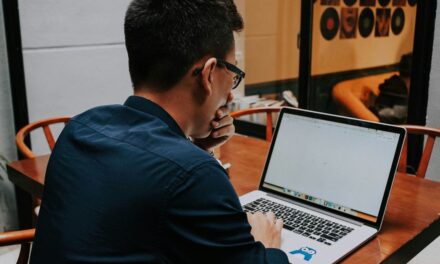The top IT trends reshaping businesses in 2025 are the ubiquitous integration of Generative AI, the strategic mandate for a resilient and proactive cybersecurity posture, the rise of the augmented-connected workforce, and a growing imperative for sustainable technology.
As of September 8, 2025, the role of Information Technology in business has completed its evolution from a back-office support function to the central, strategic driver of growth and innovation. For businesses here in Rawalpindi and across Pakistan, staying competitive is no longer just about adopting new technology, but about deeply integrating these powerful trends into the very fabric of their operations.
1. The Ubiquity of Generative AI
This is, without question, the most dominant and transformative trend of the year. Generative Artificial Intelligence is no longer a niche tool for tech companies; it is becoming a general-purpose technology, like the internet itself, that is reshaping every business function.
- What It Is: Generative AI platforms (like advanced versions of ChatGPT, Google’s Gemini, and others) are being integrated into core business software, from customer relationship management (CRM) systems to software development kits.
- The Business Impact:
- Hyper-Personalization: Businesses are using AI to create highly personalized marketing campaigns, product recommendations, and customer service experiences at a massive scale.
- Augmented Creativity and Productivity: Employees are using AI as a “co-pilot” to draft emails, write code, generate business reports, and brainstorm new ideas, leading to significant productivity gains.
- Democratization of Development: The rise of AI-powered “low-code” and “no-code” development platforms is empowering non-technical employees to create their own applications and automate their own workflows, accelerating innovation.
2. The Mandate for a Resilient Cybersecurity Posture
In 2025, cybersecurity has been fully elevated from an IT problem to a board-level, strategic business risk. The relentless rise of sophisticated threats has made a proactive and resilient security posture a non-negotiable requirement for survival.
- What It Is: Businesses are moving beyond basic, reactive security and are adopting a more mature, strategic approach.
- The Business Impact:
- Zero Trust as the Standard: The mass adoption of remote and hybrid work models in Pakistan and globally has made the Zero Trust security model the default architecture.
- A Competitive Differentiator: The ability to demonstrate a strong security posture (e.g., through an ISO 27001 certification) has become a key competitive advantage, essential for winning contracts with large and international clients.
- AI-Powered Defense: Businesses are heavily investing in AI-driven security tools to combat the new generation of AI-powered attacks.
3. The Rise of the Augmented-Connected Workforce
This trend describes the new reality of how work gets done. It is a combination of a flexible, “work-from-anywhere” model and the increasing use of technology to augment human capabilities.
- What It Is: A workforce that is no longer tied to a single physical location and is empowered by a new generation of digital tools.
- The Business Impact:
- Hybrid Work is the Norm: Companies are investing in the collaboration tools and security infrastructure needed to support a permanent hybrid of remote and in-office work, allowing them to access a wider, more global talent pool.
- Augmented Reality (AR) in the Enterprise: In sectors like manufacturing and field services in Pakistan, businesses are using AR glasses and mobile apps to provide frontline workers with real-time, hands-free access to digital information, expert guidance, and work instructions.
4. The Green Transition: Sustainable Technology
As the impacts of climate change become more apparent, there is a growing and significant push, from both regulators and consumers, for businesses to adopt more sustainable technology practices.
- What It Is: “Green IT” is the practice of designing, using, and disposing of computer hardware and software in an environmentally responsible and sustainable way.
- The Business Impact:
- Optimizing Cloud Usage: Businesses are now under pressure to optimize their cloud computing usage to reduce the massive energy consumption of data centers.
- Hardware Lifecycle Management: There is a greater focus on extending the life of hardware, using refurbished equipment, and ensuring the responsible, e-waste-free disposal of old technology.
- A Brand Imperative: A demonstrable commitment to sustainability is becoming a key part of a company’s brand, influencing the purchasing decisions of environmentally conscious consumers.





